- Best Price Guaranteed
- Flexible Rescheduling
- Under 2's Go Free
- SEA LIFE, Rainforest Adventure
Discover our Rainforest species
In this landscape food can be plentiful. During the wet season rivers flood the rainforest floor where fruits, nuts and seeds fall. When the dry season returns some fish are trapped in ever decreasing, muddy pools without food, with little oxygen and no way of escaping predators.
On the river predators can appear from any direction, above or below the water; Crocodiles and monster Catfish lurk in the waters red with mud whilst birds of prey and big cats prowl the banks. You've got to be tough to make it in this habitat. Many rainforest creatures are big and toothy but sometimes it's the smallest and most harmless looking animals which can pack the deadliest punch!
Are you ready to go on an Amazon adventure?

African Dwarf Crocodile
The dwarf crocodile is the smallest crocodile, growing up to 190 cm in length (by contrast, the Nile crocodile can reach 5 m in length). As a reptile, you will notice that our crocs spend much of their time basking.
Snappy facts!

Crocodiles have impressive jaws that are designed to close on prey with maximum force, but they cannot chew or bite pieces off their prey!

These reptiles don't move around very much... But when they do they can move at up to 28 miles per hour!
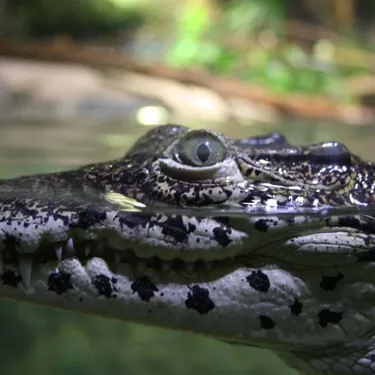
Reptiles are also unable to maintain a warmblood temperature internally as we mammals can, instead they must warm their bodies in the light to keep them at the right temperature.
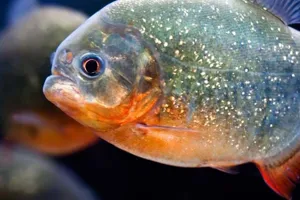
Red-bellied Piranhas
There are around 40 species of Piranha and it may surprise you to read that most are vegetarian; Feeding mainly on fruits, nuts and seeds that fall from the trees. The Red Bellied Piranhas you will encounter on your journey through SEA LIFE London, are one of the few meat-eating varieties.
These fish have a fearsome reputation but you'll soon discover that this is for the most part undeserved and that they are actually rather beautiful! Their bodies appear to be covered in glitter; These sparkling scales make them hard for predators, such as birds, to spot from the riverbank as they look like the sunlight reflecting off the water's surface. They spend much of their time hovering motionless in the river plants and roots to avoid catching the attention of any hungry Crocs or River Dolphins.
Red Bellies are scavengers that mostly feed on dead or dying creatures and very rarely attack anything that's living. They sometimes take baby birds that fall from their nests and aquatic insects. Their triangular, serrated teeth, like little steak-knives, are perfectly designed for slicing through flesh. Piranhas will dart in and out very quickly whilst feeding in order to grab a mouthful but get out fast before they are accidentally bitten by another Piranha.
Did you know?

Camouflage
The red belly is a form of camouflage. In the red, muddy waters of the Amazon it is hard to spot a Red Bellied Piranha from below.

Daily feed
Our Piranhas are fed daily, so you may get the chance to see the feeding frenzy!
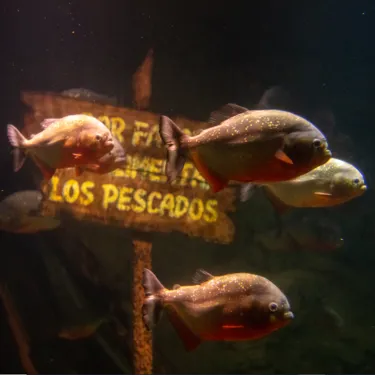
Watch out!
These fish are at their most dangerous when trapped in a small pool of water. If they are starved for a long period of time they are driven to more aggressive behaviour in order to get a meal.
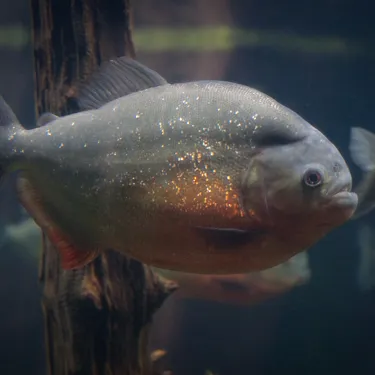
Red belly
The Piranha with the reddest belly is likely to be the most dominant in the group!

Big Fish
Tropical rainforest rivers are notoriously full of BIG freshwater fish and we have plenty of these in Rainforests of the World. It might surprise you to discover that almost all of the fish in our Amazon and Southeast Asian displays were donated by members of the public who could no longer look after their giant fish.
Species such as Red Tailed Catfish and Black Pacu are often sold by pet shops when they are very tiny, to owners who only have small tanks. However these river monsters soon grow large... very large! And big fish need big tanks. So if you're looking for a pet fish, do some research and be sure you can still look after your pet once it's fully grown.
Even bigger fish facts!
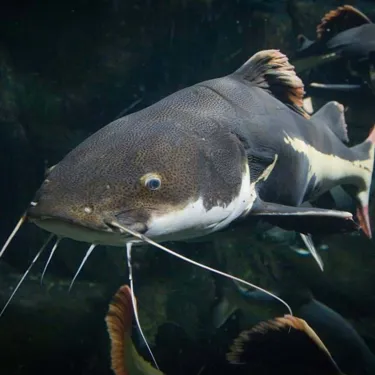
Whiskers on a Fish?
Catfish get their name from the whisker like appendages on their face. These are sensitive & covered in taste buds helping them to seek out food in murkiest waters. Some species have tastebuds on…

Bubble Nest
Giant Gouramis use their labyrinth organ to blow mucusy bubbles and create bubble nests in which to raise their young.

Counting Catfish
There are around 3000 known species of Catfish. The largest is Mekong Giant Catfish which can reach nearly 3 meters long and weigh up to 350kg. That's nearly as heavy as a grand piano!

Tank Busters
These fish are often described as 'Tank Busters' because they quickly get too big for home aquariums.
Who else will you meet in the rainforest?

Red Tailed Catfish
Red Tailed Catfish are popular aquarium fish because they have such beautiful colouring. They are found in large rivers in South America such as the Amazon and Orinoco.

Chilen Rose Tarantula
The Chilean rose tarantula is native to desert and scrub habitats around Chile, Argentina and Bolivia. Did you know: These spiders can throw hairs from their body in defence, which cause irritation to…
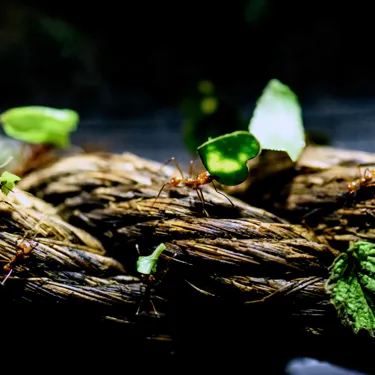
Leaf-cutter ants
Leaf-cutter ants grow their own food in underground fungus farms. Pieces of leaves are carried hundreds of metres, with each ant carrying a piece up to 50 times its own body weight!
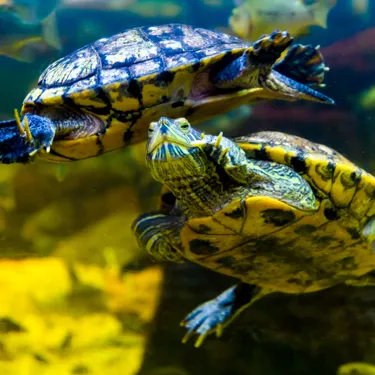
Terrapins
All out Terrapins here in London are rescued pets. Want to learn about our Terrapins? Head over to our Turtle and Terrapin page!
Find out more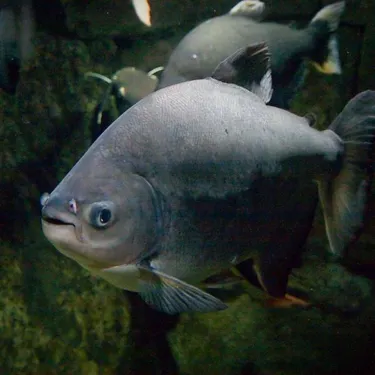
Black Pacu
These close relatives of Piranhas have strong teeth for crunching through the tough shells of nuts and seeds. Fruit seeds consumed by Pacu are dispersed somewhere else, helping new trees to grow.

Giant Gourami
These fish have a labyrinth organ which allows them to breath air. Helpful when you're trapped in an oxygen-depleted pool during the dry season!
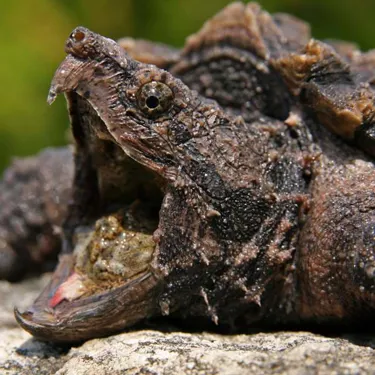
Snapping Turtle
Snapping Turtles are well known for their strong 'snapping' beak. It is an omnivorous species, although often prefers animal prey.
Find out more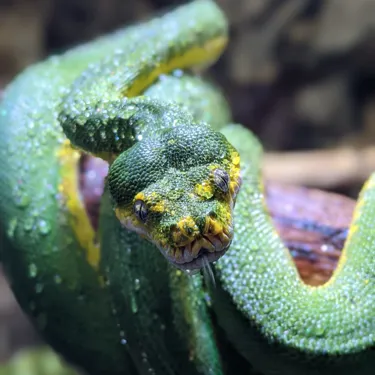
Green Tree Python
As their name suggests, these snakes spend a lot of time in trees. But, they are not always green. They are nonvenomous, carnivorous reptiles that feed on tree lizards, birds & small vertebrates.

Rainforest Talks
Don't miss our rainforest talks happening throughout the day!

Meat Free Mondays
One of the main drivers of rainforest deforestation is the creation of farmland for livestock or for crops to feed livestock. By going meat free on just one day a week you can cut down your annual carbon footprint by as much as taking a car off the road for a month. Go on, give it a go... we dare you!

Fun Fact
Tropical rainforests are nicknamed the 'world's largest pharmacy' because over a quarter of all natural medicines have been discovered in them.